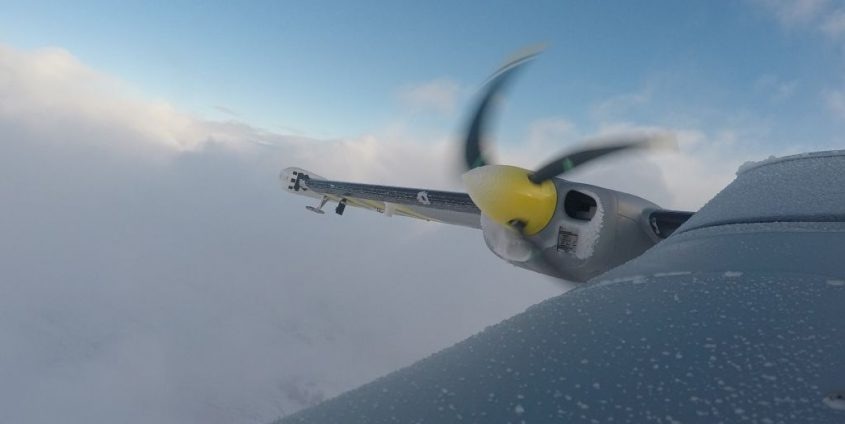Nov 30 2018
One of the biggest safety risks in aviation is in-flight icing of aircraft wings. Scientists have now created novel wireless sensors that enable better detection of the formation of ice.
 (Image credit: Airborne Technologies)
(Image credit: Airborne Technologies)
Whenever flights occur during bad weather conditions, planes inexorably spend long periods and tend to fly through the cloud layer. With below-freezing exterior temperatures—considering the regular flight altitudes, this is often the case, even at the time of summer months—a risky process of ice formation can occur on the aircraft wings. This could have an adverse impact on the flight characteristics and even cause the aircraft to crash in extreme situations.
Now, a sensor system developed by scientists helps in detecting the formation of ice. The novel technology is based on sensors analogous to those applied to wind turbines’ blades. One of the new features lies in the design of the new sensors, which are considerably thinner and can thus be better adapted to an aircraft’s aerodynamics.
The sensors measure the temperature and the degree of icing and wirelessly transmit this information to a receiving unit in the cockpit.
Hubert Zangl, Institute of Smart Systems Technology, University of Klagenfurt
The project team fully focused on the sensor’s thermal behavior, for example, its interactions with other components like the heating elements, as well as on the precision of the temperature measurements obtained from the surface of the aircraft wing. Another aspect of the project was dedicated to conducting simulations of the ice formation process and to realizing higher precision in the measurement of air stream on the surface. Another particular challenge involved the development of the antennae which was needed to guarantee the best possible radio contact to the receiving unit.
The project, funded by the Austrian Research Promotion Agency (FFG), was jointly conducted with eologix sensor technology gmbh, FH JOANNEUM GmbH (Institute of Electronic Engineering) and Villinger GmbH (de-icing systems for the aviation industry). Airborne Technologies performed the testflights.
According to Hubert Zangl, the insights thus obtained can be applied to many different fields: “The sensor is flexible in terms of its installation and dimension, and consequently it is suitable for use in a vast range of situations.”